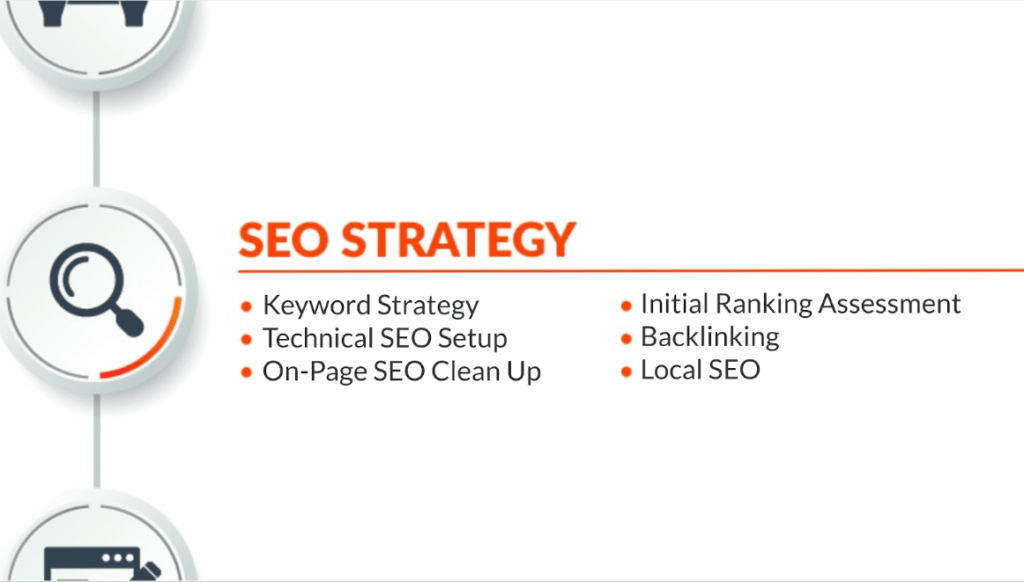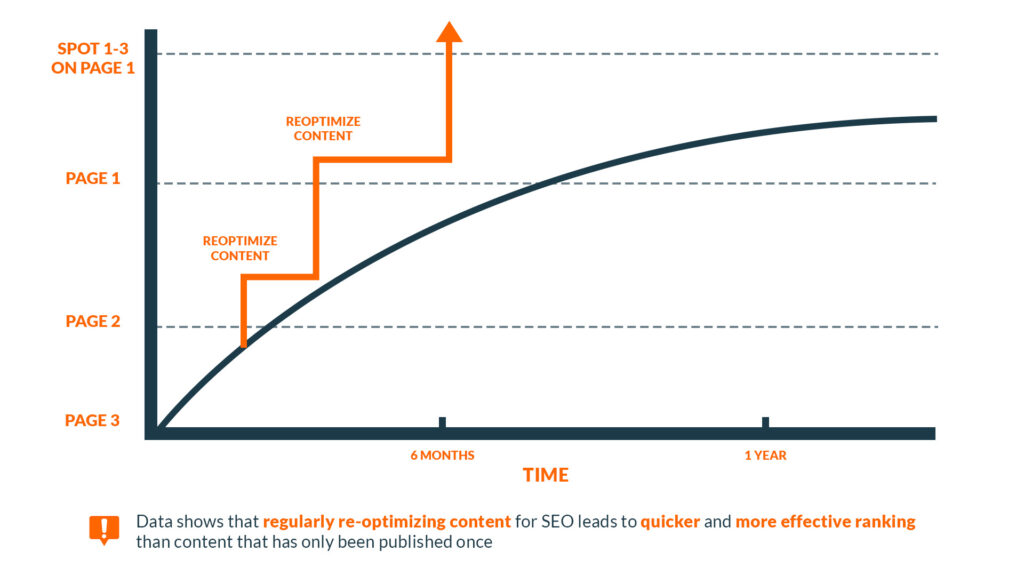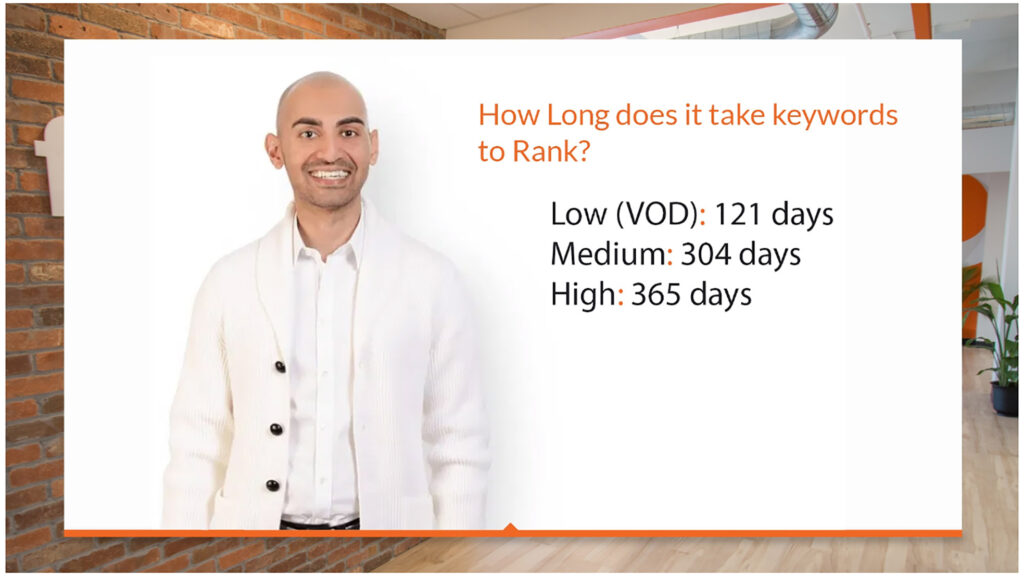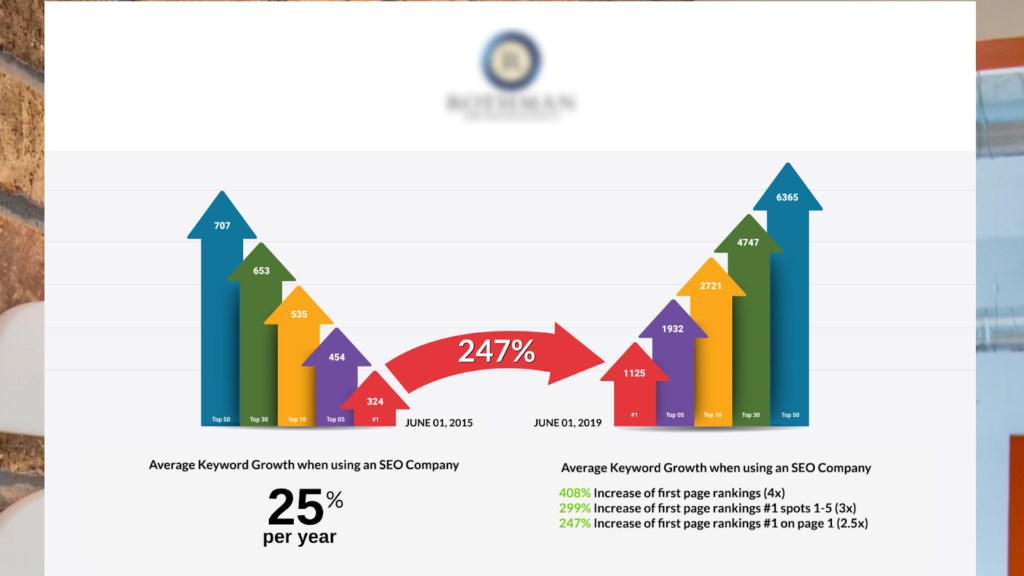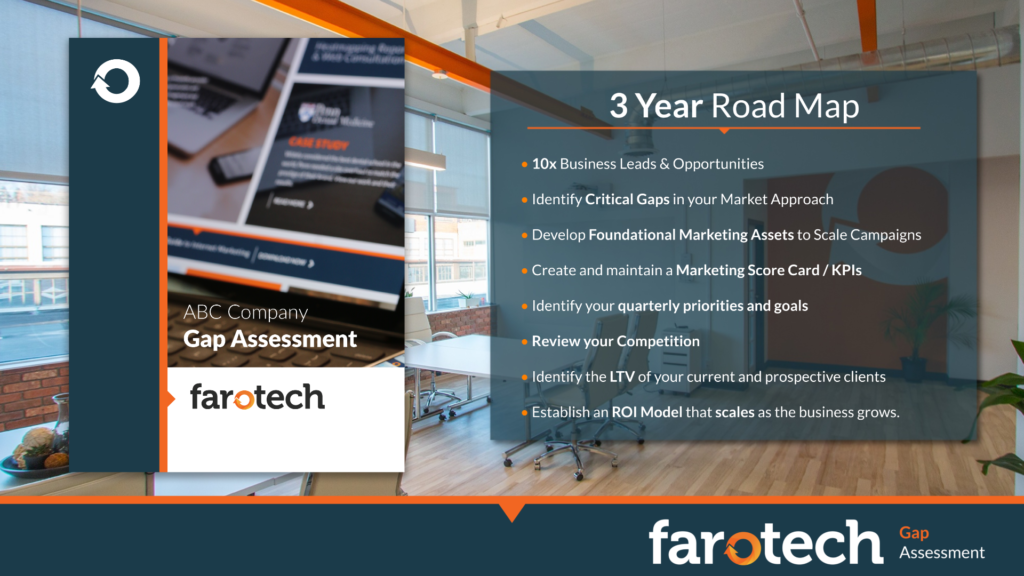Technical SEO
When it comes to technical SEO, there are a variety of factors you need to consider. The list is actually very exhaustive, and we highly recommend that you use a subject matter expert at your chosen manufacturing marketing company to go through each of these elements one by one.
Historically, Google has always favored companies that adhere as closely as possible to their best practices. This is especially true when it comes to technical SEO.
It is highly advised that you use the most cutting-edge SEO tools to review your website’s technical SEO. The tool that we suggest that companies use is a free tool called Screaming Frog. This tool will analyze your site and give you step-by-step instructions to your web developer to clean your website up and to better fit Google web standards.
Here is an example of a Screaming Frog Technical SEO report. However, as you can see, these reports are highly technical.

It is this level of detail that matters to Google, and it is also a key ingredient to getting your website ranking effectively. This is why many manufacturers opt to work with a manufacturing SEO company to ensure the best use of these tools.
On-Page SEO
Similar to technical SEO, On-page SEO is a critical ranking factor concerning how you code and optimize your website. There is a whole host of on-page SEO tactics that must be implemented to ensure that your website ranks effectively however I want to focus on three critical pieces:
- Structured Content
- Structured content is all about compounding results and how your content can be structured into a hierarchy on your website that makes the content pages above it stronger and stronger to keep users engaged and provide value. As you build related content hubs and spokes further down the hierarchy, the value of your top pages increases. Here, we can see what an ideally structured sitemap looks like:
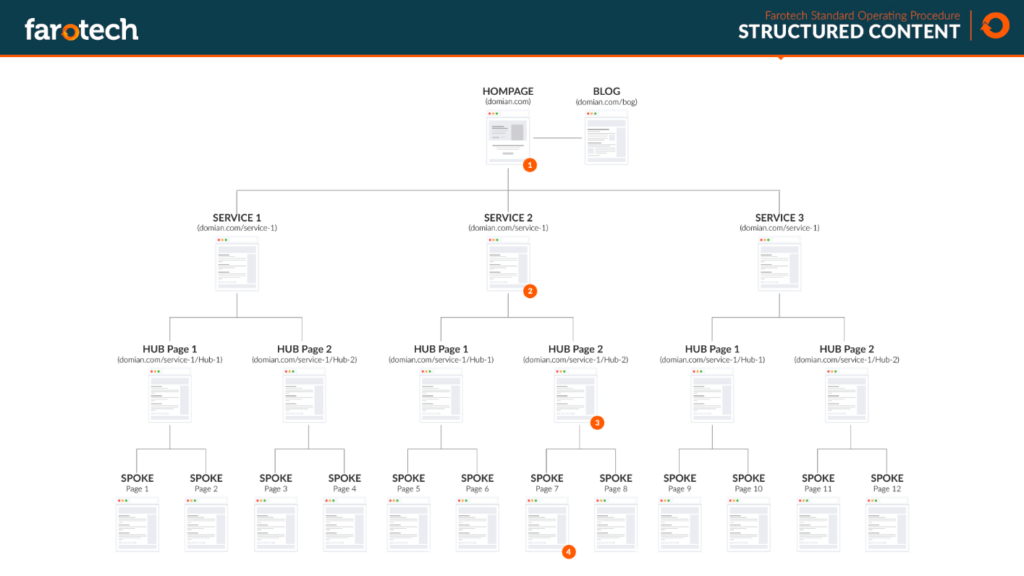
- The problem is that most manufacturing companies publish pages at random without a strategy or structure, and the pages won’t strengthen or compound. The beauty of structured content is that once you get to the Hub Page level, you can connect it to things like Spoke pages, Blog pages, Videos, or Infographics related to and which support the Hub. That Hub corresponds to the Service Page above it, compounding the power of everything below it.

Metadata & Optimization
Google is obviously one of the strongest supercomputers in the world. However, it is indexing millions and millions of pieces of content in milliseconds. That’s why as a rule of thumb, we strive to organize our content so Google has to think less. And the most basic but most ignored item is Metadata and optimization. Some key aspects of this include:
- Developing keyword-rich title tags
- URL slugs
- Headers (H1, H2, and H3)
- And Meta-data: the text that is written on a search result that explains what your article is about.
Keyword Optimization
Similar to Metadata and optimization, you want your website to rank for critical keywords and key phrases. Therefore, it is essential to do your keyword research in advance and apply these keywords effectively throughout your content.
While it is important to write really great content, without optimizing content for search engines, it might be invisible.

Content-Based SEO
The last of the technical SEO ingredients is called content-based SEO, also called Content Marketing. With content-based SEO, your team (or the manufacturing marketing company/agency of your choice) writes content that will establish you as a thought leader in the eyes of your potential readers. As you begin to develop more content––assuming it’s SEO optimized––you will begin to rank for more and more coveted keywords. There are a lot of tactics that can make you successful in this approach, however we will cover just two here:
- Editorial Calendar: Developing a publishing calendar that turns your marketing from reactive to proactive is critical for content success. This content considers all of the things that might impact your business throughout the calendar year such as tradeshows, webinars, seasonality etc… With the help of your manufacturing SEO company, you can develop a calendar that lets your team know what content is going out every week, every month, every quarter––and ideally the whole year. Once this calendar is produced, it is optimized according to the format your content will be displayed in (Blog, article, eBook, etc.), which keyword you intend to optimize, when it will be published, and when it will be promoted. This calendar serves as the backbone to your Content-Based SEO approach.
- Blogging: It seems like every company has a blog. But why? The easy answer is to establish your company as a thought leader to potential clients. But the larger reason is that when you generate thought-provoking and engaging content on your blog, that article ideally gets backlinked to from outside websites. These backlinks improve your domain authority (DA) and this is what allows your website to rank bigger stronger and faster than your competition. Want to see how you stand in terms of domain authority? You can use SEMRush’s Domain Authority tool to see your website’s authority.
Off-Page SEO

Backlinking: As we just mentioned above, links from outside websites that point to your website increases your trust in the eyes of Google. Therefore, it is important to do anything you can to generate more links from outside websites.
But not all links are equal––backlinks from high domain authority websites create much more value for your company’s ranking potential than links from low domain authority websites.
Outside of developing very compelling link-worthy content, there are tactics you can use such as digital PR, influencer outreach, and guest posting that can create powerful backlinks.
A word of caution: agencies that use deceptive tactics, often called black hat or gray hat SEO, to garner backlinks for your company can actually get your website penalized from Google. It is very important that when you hire a marketing SEO company that you avoid companies that utilize such tactics.



